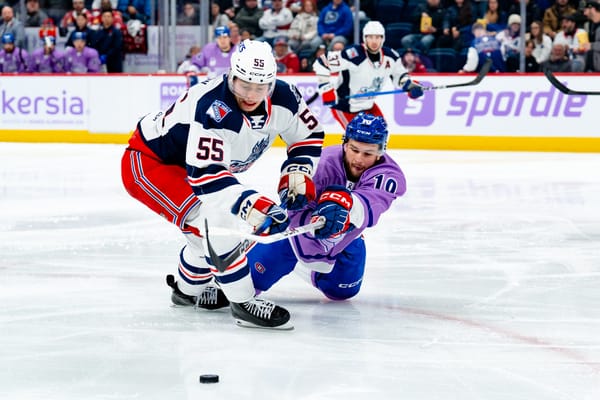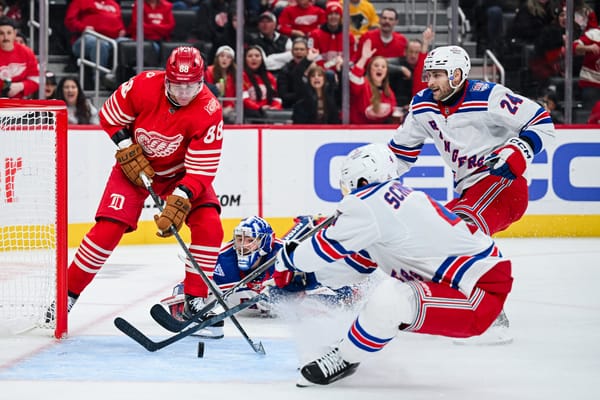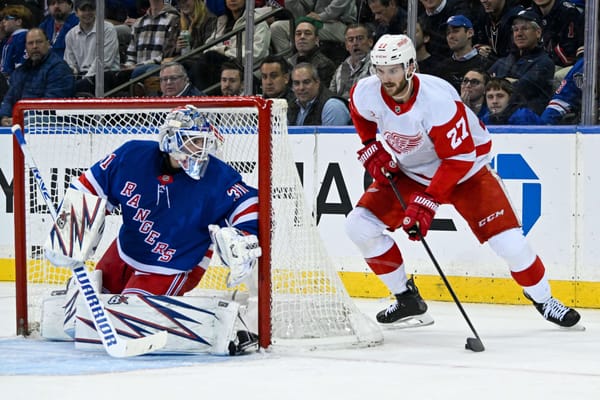Counterpoint: The Rangers Have to Trade Kevin Hayes
One month.
That’s how long it took for the tide to change regarding Kevin Hayes’ future with the New York Rangers. In the case of the New York Post’s Larry Brooks, it was 28 days. On October 29th, Brooks wrote that Hayes’ departure this season was not only fait accompli, but that it should be expedited. This past Sunday, Brooks walked it all back, stating that Hayes is “more than a trade chip” and insinuates that he personally would not trade him in most circumstances.
Update (4:48pm): After discussing with Brooks, I believe I misinterpreted his October stance. His argument was that the Rangers had a tough decision to make regarding Hayes, but should the Rangers opt for a trade then they should make it happen as quickly as possible.
I’m not calling out Brooks so much as pointing out the current mood, as he is far from alone. In fact, our own Tom Urtz Jr. wrote just a few days ago that Hayes “needs to be part” of the team’s future.
Related
Kevin Hayes Needs to Be Part of New York Rangers’ Future
Make no mistake, Kevin Hayes is a good hockey player. He has been since his rookie season back in 2014-2015, and with former head coach Alain Vigneault no longer around to hold him back he’s playing even better than ever. Tom did a good job of highlighting the statistics which show as much.
There are many context-oriented reasons in favor of a trade. There’s a strong argument to be made that draft picks and prospects still benefit the Rangers most long-term, and a Matt Duchene extension in Ottawa would render Hayes the clear-cut best center on the trade market. There’s also the fact that Mika Zibanejad, Filip Chytil, Brett Howden, and Lias Andersson make for a crowded center corps as is, and the 2019 draft is heavy with high-end centers as well. For the sake of argument, though, let’s ignore these factors. Even in that case, the situation still heavily demands a trade.
Long-term Contracts for Unrestricted Free Agents Rarely Work Out
Exclude elite players from the discussion. The Rangers did perfectly well with Marian Gaborik, and surely Boston does not regret its investment in Zdeno Chara. The merits of this article will not apply to Artemi Panarin and perhaps Mark Stone should they be available in the summer, though that’s a discussion for another day.
But for players like Hayes - ones who are good but hardly superstars - the list of success stories is desolate. Here is a list of forwards signed to 5-7 year deals as unrestricted free agents between January 2013 and August 2016, with a cap hit falling between $4M-$7M.
Joe Pavelski has been a raging success in San Jose, while Tyler Bozak was serviceable in Toronto. Beyond that, this is list is an absolute disaster. Just two out of those 16 signings have proven to work out. For context, that’s roughly the same rate at which fourth-round picks turn into NHLers.
The free agent market is heavily slanted towards the sellers (players). NHL general managers are under immense pressure to make teams competitive relatively quickly, and while some have job security and time to show progress, many do not, as Ron Hextall recently learned in Philadelphia. If you’re a GM who needs results soon, then it’s hard to worry about the consequences of a decision four years down the line. Best case, you worry about that later. Worst case, it becomes a new GM’s problem.
Kevin Hayes is a 6’5, two-way center who is producing at a career-high clip. He’s a highly desirable commodity, and if three anxious GMs are willing to entertain his contract demands then it doesn’t matter what the other 28 think. If Hayes doesn’t know this, then surely his agent does.
The Rangers’ and Hayes’ Windows of Opportunity Don’t Match
Some of the aforementioned players were grossly overpaid from the moment the contracts were agreed upon, but in other cases it took some time for the problems to kick in. For Ryan Callahan and Valtteri Filppula, their play actually matched the paychecks. By year three, though, their cap hits were clear liabilities.
As previously referenced, Tom did a solid statistical breakdown of Hayes’ progression from his early 20s until now. That’s all wonderful. He’s been a very good player for the Rangers over the last five seasons.
But Jeff Gorton is not negotiating payment for services rendered. If the Rangers pay Hayes for future seasons, then it has to be based on what he will provide in future seasons. What Hayes has done from 2015 through 2018 will be of no use to them in 2020, let alone many years beyond that.
When it comes to aging, every player is different. Mike Richards inexplicably lost all NHL ability before his 30th birthday, while Matt Cullen is still inexplicably playing at 42 years old. We’re not clairvoyant, and so we don’t know with absolute certainty what the future holds for Hayes.
But if Hayes, who will turn 28 next season, is like most NHLers, then it means his descent is soon approaching. Even if Hayes does manage to justify a premium cap hit at the start of the contract, he almost certainly won’t for the full length of it.
There are scenarios where that’s still worth signing on for. At some point, San Jose is going to have a rough time with the long-term contracts handed to Evander Kane and Marc-Edouard Vlasic (among others), but that was a calculated sacrifice for the sake going all-in for a Stanley Cup right now.
Suffice to say the Rangers are not in a similar situation. The Rangers could be a competitive team as soon as next season, but it’s realistically going to be multiple years before they are in the conversation as a perennial contender. The remainder of Hayes’ prime would be spent on a team still trying to get its ducks in a row, and by the time the Rangers are ready to go for it, they’ll have an aging player not worth the cap hit. Simply put, the Rangers and Hayes are on different timelines right now.
Trading Hayes Doesn’t Have to Be A Rebuilding Move
One of the arguments against a trade is that draft picks and prospects are not enticing compared to the prospect of re-signing 27-year-old top-six center. For the sake of argument, let’s accept this assessment at face value.
There’s no reason the Rangers can’t quickly move picks and prospects in a separate deal over the summer.
The series of moves Arizona made in 2017 should be familiar. They traded impending free agent Martin Hanzal for multiple draft picks. In the summer, they then swapped the seventh overall pick and Tony DeAngelo to the Rangers in return for Derek Stepan and Antti Raanta. It’s a hard to envision Arizona trading for the younger Stepan if they hadn’t first moved out Martin Hanzal, and surely the 23rd overall pick and 2018 second-rounder acquired from Minnesota offered a security blanket which made the seventh overall pick expendable.
St. Louis made a similar series of moves in 2017. At the deadline, the Blues traded pending UFA Kevin Shattenkirk for a package including Washington’s 2017 first-round pick. Four months later, St. Louis turned around and moved Washington’s pick to the Flyers in return for a 25-year-old Brayden Schenn.
Trading Hayes is less about rebuilding and more about buying time and creating flexibility. A decision to sign Kevin Hayes has to happen almost immediately; we’re less than three months away from the trading deadline. Rather than taking a big risk and blindly hoping that his prime overlaps with a Cup window, a trade would instead let the Rangers regroup and provide them the assets to go after an appropriate player who more cleanly fits the team’s trajectory.




